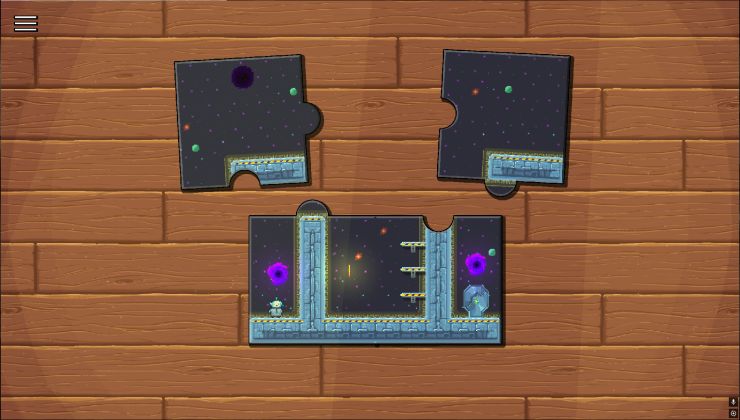After three years without a full release, X.Org 21.1.0 has finally landed with new features and a lot of bug fixes. While the next-generation for all Linux systems will eventually be Wayland, plenty still default to X.Org.
Developer Povilas Kanapickas announced the release on October 27, noting that they expect issues to come up once more people start using it with a 21.1.1 version patch being planned to arrive in the next few weeks rather than their usual time of a few months. For a reminder: XWayland, the project that ensures backwards compatibility with applications on Wayland is now released as its own thing.
Here's the release highlights:
- The meson support is now fully mature. While autotools support will still be kept for this release series, it will be dropped afterwards.
- Glamor support for Xvfb.
- Variable refresh rate support in the modesetting driver.
- XInput 2.4 support which adds touchpad gestures.
- DMX DDX has been removed.
- X server now correctly reports display DPI in more cases. This may affect rendering of client applications that have their own workarounds for hi-DPI screens.
- A large number of small features and various bug fixes.
Some you may have missed, popular articles from the last month:
All posts need to follow our rules. Please hit the Report Flag icon on any post that breaks the rules or contains illegal / harmful content. Readers can also email us for any issues or concerns.
I was under the impression that nobody would work on new X.org features anymore and it would even hardly be maintained?
3 Likes
Quoting: EikeI was under the impression that nobody would work on new X.org features anymore and it would even hardly be maintained?I think that this is maintainers realizing some bugs can't just be left to rot and decided to patch up before they leave.
2 Likes
Quoting: TrainDocI think that this is maintainers realizing some bugs can't just be left to rot and decided to patch up before they leave.Variable refresh rate support sounds like a major thing to me, though?
1 Likes
Quoting: EikeBut the question is, what did it improve?Quoting: TrainDocI think that this is maintainers realizing some bugs can't just be left to rot and decided to patch up before they leave.Variable refresh rate support sounds like a major thing to me, though?
VRR has been working on X for long time.. the only issue has been that it has been working only with 1 monitor active.
Does that change that? what the F is modesetting driver, what does it improve for the end user?
3 Likes
Quoting: XpanderOh man!Quoting: EikeBut the question is, what did it improve?Quoting: TrainDocI think that this is maintainers realizing some bugs can't just be left to rot and decided to patch up before they leave.Variable refresh rate support sounds like a major thing to me, though?
VRR has been working on X for long time.. the only issue has been that it has been working only with 1 monitor active.
I've been actually using it on X already!
Yes, sorry, it's obviously not the big change I thought.
0 Likes
Look forward to this in mainline arch repo. Its a feature I've been waiting for a long time and useful for me since I don't use Wayland yet due to some bugs and missing features.
0 Likes
Thanks for explanation.
The modesetting driver part i could search myself also, but my point actually was that there are so many little things. like if you search for what modesetting driver is, then you get anther set of questions. What is KMS what is DRM..then you search for this and even more new questions arise :)
Last edited by Xpander on 28 Oct 2021 at 11:18 am UTC
The modesetting driver part i could search myself also, but my point actually was that there are so many little things. like if you search for what modesetting driver is, then you get anther set of questions. What is KMS what is DRM..then you search for this and even more new questions arise :)
Last edited by Xpander on 28 Oct 2021 at 11:18 am UTC
0 Likes
Quoting: GuestYeah, except their point is that it's a situation where you don't get to learn step by step. Learning about one step tells you nothing meaningful because it's presented in a way that leaves it meaningless unless you learn about this other step, which in turn tells you nothing unless you learn about still other steps.Quoting: XpanderThanks for explanation.Yes, that's how 'learning' works - step by step :smile:
The modesetting driver part i could search myself also, but my point actually was that there are so many little things. like if you search for what modesetting driver is, then you get anther set of questions. What is KMS what is DRM..then you search for this and even more new questions arise :)
2 Likes







 How to setup OpenMW for modern Morrowind on Linux / SteamOS and Steam Deck
How to setup OpenMW for modern Morrowind on Linux / SteamOS and Steam Deck How to install Hollow Knight: Silksong mods on Linux, SteamOS and Steam Deck
How to install Hollow Knight: Silksong mods on Linux, SteamOS and Steam Deck